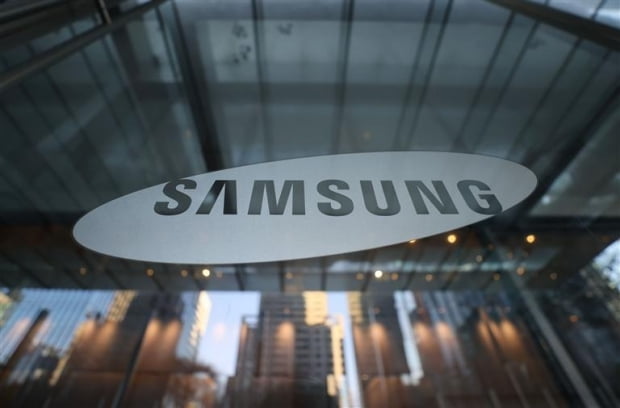
Photo = Yonhap News
Samsung Electronics has agreed with the labor-management council to raise employee annual salaries by an average of 7.5% this year. This is the largest increase since 2013, when quarterly operating profit exceeded 10 trillion won for the first time in history. It is an analysis that it has presented an unprecedented level in consideration of the recently raised performance and compensation demands of major companies.
On the 26th, Samsung Electronics announced the agreement on the wage increase plan on its in-house bulletin board. 7.5% is the sum of the average base pay increase rate of 4.5% and the performance increase rate of 3%. The rate of increase in wages is applied differentially for each individual according to the rank and grade. The performance increase rate is determined by differentiating the grades of’A’,’I’, and’C’. It is explained that the increase rate exceeds 3% if it receives the highest’A’ grade.
By position, the increase rate of young employees was high. The increase rate of new high school graduates and college graduates (CL 1~2) employees reached 11%. The starting salary for college graduates increased by 3.5 million won from 44.5 million won to 48 million won. Welfare points paid to all employees will also increase from 700,000 won to 1 million won. This wage increase is related to the basic annual salary paid monthly. The bonuses, such as excess profit bonus (OPI, maximum annual salary of 50%) and target growth incentive (TAI, maximum basic wage twice a year, 100%), are separate from the proposed increase.
An official from Samsung Electronics said, “Even though management conditions were difficult due to the spread of the new coronavirus infection (Corona 19), we set a high salary increase in consideration of the fact that good management performance was achieved thanks to the hard work of employees.”
He also said, “Samsung Electronics will continue to maintain wages that are 1.2 to 1.4 times higher than that of major companies.” As Samsung Electronics’ annual salary increase rate is confirmed, other electronic affiliates, such as Samsung SDI, Samsung Electro-Mechanics, and Samsung Display, are also planning to confirm employee wage increases sooner or later.
The biggest increase since 2013… Base salary 4.5% + performance 3% ↑
IT 發’salary increase’ finally joined… LG Electronics’ 9% increase also affected

Samsung Electronics signed a 7.5% wage increase, the largest since 2013, on the 26th. This is the aftermath of the domino salary increase, which started with an information technology (IT) company.
The average annual salary of Samsung Electronics’ employees is 127 million won (as of last year), ranking first in Korea. Samsung Electronics has prevented the churn of key talents by maintaining an annual salary level that is nearly 1.5 times higher than that of its competitors. This is why there was no noise in wage negotiations with the employee council.
But this year, the atmosphere has changed dramatically. It started with a talent battle between game and IT platform companies. As the average annual salary of IT companies exceeded 100 million won, employees of large manufacturing companies, feeling deprived, also demanded a simultaneous increase in wages. The’performance pay controversy’ that started at SK Hynix is also considered to be a factor behind the spread of employee complaints.
Negotiations at the Samsung Electronics employee council, an autonomous labor-management organization, also suffered difficulties. Even on the 21st, when new wages are applied this year, the rate of wage increase could not be determined. Samsung Electronics usually concluded wage negotiations in early March and has been paying the increase since March’s payday. The company explained that the employee council requested a basic increase rate of 6%, while the management adhered to 3%, so the negotiations were lengthened.
On the surface, a compromise was reached that set the base rate of increase at the halfway point of 4.5%. However, the actual increase rate of up to 3%, which is applied differentially depending on the position and personnel evaluation, reaches 7.5%. The double-digit increase rate was applied to employees who were dissatisfied with the wage level. The average wage increase rate for employees in CL1~2 level, which is a high school graduate new employee to a college graduate representative, reaches 11%. This is the background for the evaluation of the’Complete victory of the employee council’ over this negotiation.
An industry insider said, “A request to improve wages and treatment through the Internet anonymous bulletin board’blind’ has sprung up,” and said, “It cannot be said that their opinions represent employees, but it must have been anxious.”
The fact that LG Electronics, a conglomerate in the same industry, decided to increase wages this year at 9% is analyzed as the background for Samsung Electronics to propose an unprecedented increase. On the 18th, LG Electronics promised labor unions an average wage increase of 9% and an increase of up to 6 million won per job position. Last year, the increase rate was 3.8%.
Other companies that have watched the wage negotiations between Samsung Electronics and LG Electronics are uncomfortable. This is because it is not easy to maintain the existing wage level, let alone raise, for large and medium-sized companies in other industries that were directly hit by Corona 19. An official from the business community said, “It is obvious that the departure and fluctuations of the excellent workforce are evident.”
Concerns about wage polarization are also growing. An official from an economic group said, “The demand for wage hikes and performance compensation in the IT industry is affecting manufacturing sites as well. This will be considerable.”
Reporter Song Hyung-seok [email protected]
